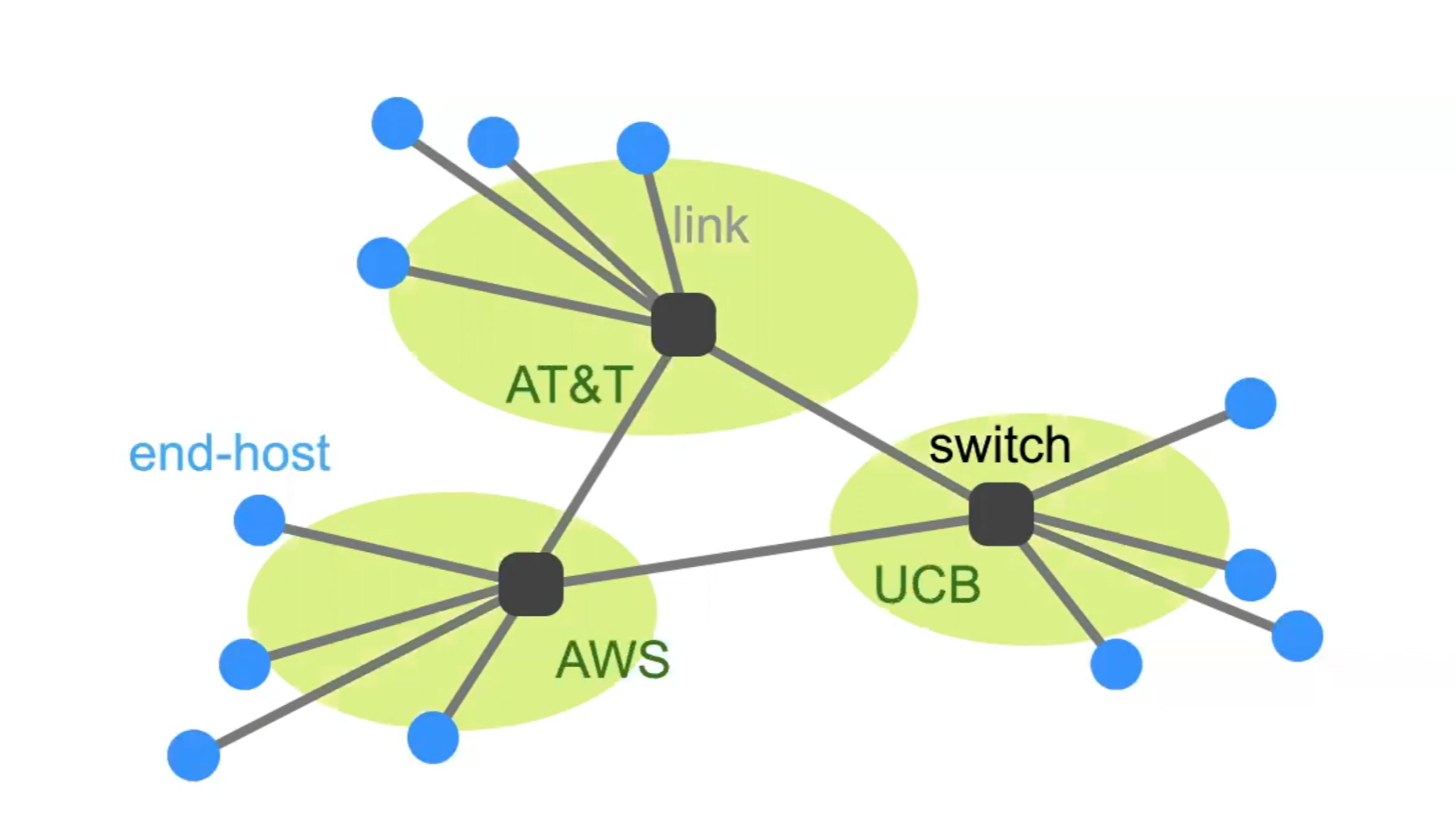Intro to the Internet
About this Class #
There are two meanings of internet:
- the infrastructure that connects computing devices,
- or the ecosystem of applications built on that infrastructure.
When the average person says “internet” they usually refer to the second definition. This class, on the other hand, explores the first.
Why study the internet? It’s one of the most impactful and life-changing inventions in human history. In addition, it’s too large and complex for theoretical models and requires an entirely new design paradigm of:
- Decentralized control
- best-effort service model (no guarantee or notification of data delivery)
- route around trouble
- dumb infrastructure, smart endpoints
- end-to-end design
- layering
About the Internet: a high-level overview #
At a very high level, the Internet is composed of three main types of components:
- End hosts, like phones, computers, and IoT devices, send and receive packets as a first or last destination.
- Switches, which are often routers, manage the connections between end hosts and forward packets arriving on one link to another link.
- Links connect switches and end hosts together. These could be one of many technologies like fiber cables, WiFi, or phone lines.
Some more definitions #
ISPs (internet service providers) operate independently from one another and each manage a small portion of the available internet. Oftentimes, the infrastructure within an ISP is abstracted away from the public, and can be treated as a singular component.
Since ISPs are often competing and may not cooperate to create the optimal route for end users, network engineers must account for real-world and business considerations for any design.
Autonomous Systems (AS) are groups of routers under the same control. ISPs consist of one or more AS.
Packets are segments of bytes. Packets typically include:
- A header (info for network to make decisions). Packet headers must contain the destination address.
- A body (payload, and/or headers for other layers)
- The header is meaningful to both the network and endpoint, whereas the body is only useful to the endpoint.
Flow refers to a stream of packets exchanged between two endpoints.
Hostnames are human-readable identifiers (like a domain, google.com).
- Hostnames don’t provide information about the location of a host. However, they can correspond to IP addresses that do.

The main job of the Internet is to transfer data between end hosts. This is more difficult than it seems because there are many considerations:
- What path do we take between hosts and switches?
- Do the available paths have adequate bandwidth?
- What protocols do we use? Can it handle every possible communication case?
Internet Problems to Solve #
In order to keep the internet running, we need to answer the following questions:
- How do we create a robust naming scheme for billions of end-hosts? (IP)
- How do we address endhosts? (DNS)
- How do we map names to addresses?
- How do we compute forwarding tables? (routing control plane)
- How do we forward packets? (routing data plane)